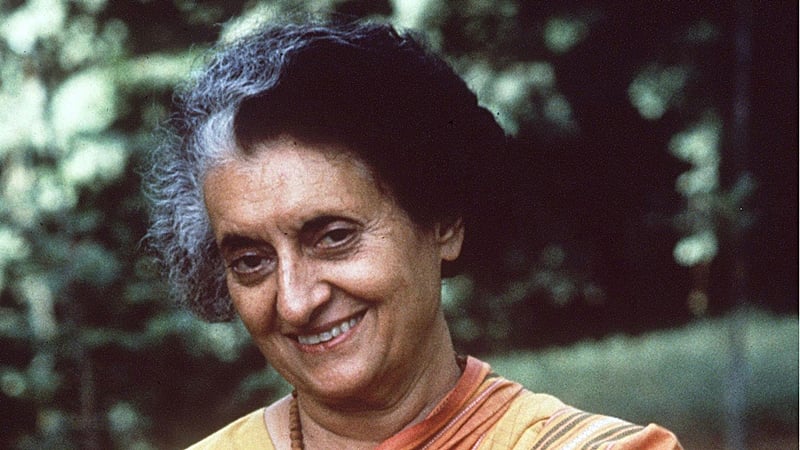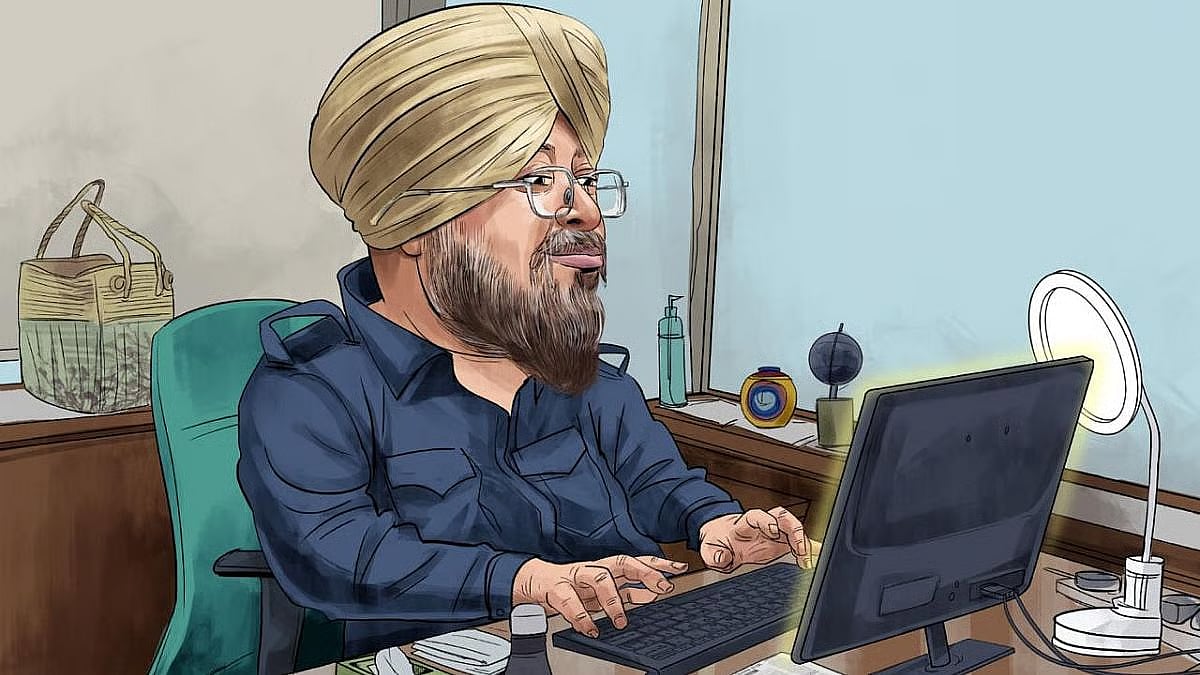Those among us who nurture this craving for a strong figurehead are besotted with both Indira Gandhi and Narendra Modi in equal measure.
In a way, they were a mirror image of each other: Both seemingly sure of themselves — assured of their place in the sun; both showing a certain disdain for inner party democracy, preferring handpicked chief ministers and Governors; both dressed well and were acutely conscious of their public image; both dripping with charm when abroad; but both snappish at home — a non-nonsense demeanour. Both liked to be in command, yet they allowed things to veer out of control…smug in the belief that they could intervene at will. Both unabashedly unapologetic and unforgiving.
The jury is still out on how both Modi and Indira approached geo politics. Modi too has brought with him a certain pragmatism, a determination to break away from a cliched approach to foreign policy, an out of the box thinking, a confidence that he can leverage the external for funding domestic growth.
And yet Indira was more bold and determined of the two but without being bellicose or hawkish. She also understood better the dynamics of the region, had sharper reflexes, an uncanny ability to navigate the diplomatic cross currents and, most important, grit and ruthlessness. But these are early days for Modi.
No wonder, in two brilliant strategic manoeuvres Indira Gandhi was able to change the contours of the region — by dismembering Pakistan and by goading Sikkim into ‘merging’ with the Indian union — a merger that some would say was cleverly masked in local ‘aspirations’ and egged on by RAW’s ‘orchestrated’ protests against the priest-king — with China, for once, twiddling its thumb and quietly watching the shenanigans from the border post at Nathu La. For Beijing, it was easily one of their biggest foreign policy blunders — their inability to sense in time that Sikkim was on a slippery slope, slithering into India’s permanent embrace. After the deed was done, it could do little in the matter except making perfunctory noises and questioning the merger, but stopping short of making an intervention.
Mind you, after Independence, the Sikkimese, mostly Nepali Hindus by descent, had held a referendum and decided against joining the Indian Union, opting instead for a special protectorate status under the suzerainty of India (not sovereignty). The great visionary Sardar Patel, not for a moment, considered — at least it is not documented — the strategic nuances of amalgamating Sikkim into the Indian union; nor did Panditji or Krishna Menon deem it necessary to relook at the arrangement in view of China’s invasion of Tibet. Nor did the 1962 war change the dynamics of our relationship with Sikkim, a strategic buffer state in the region, nor the recurring skirmishes thereafter.
Rather, more than a decade later it was Indira who had the good sense to correct “the historical wrong of 1947.”
She did so in the face of a reportedly recalcitrant and assertive monarch of Sikkim who rebuffed all attempts to gather him into a permanent embrace, medieval machinations and palace intrigue, jockeying among the political parties in Gangtok and a restive civilian population. Not to forget the torrent of criticism that the orchestrated ‘merger’ ignited with the West not exactly scrambling to Indira’s defence, least of all the US.
There was domestic criticism from an unusual quarter: BG Verghese, the then editor of Hindustan Times, had derisively dismissed the ‘merger’ as nothing short of ‘annexation’ — a scathing condemnation of the ‘seduction’ of ‘a ward’ that was under India’s ‘protective care’! The edit ran under an equally provocative headline, ‘Kanchenjunga — Here we come.’
But Indira kept her nerve, the geo-political gambit paid off and the Chinese claim to Sikkim was eventually consigned to the archives, when in 2003 —in a quid pro quo — Atal Behari Vajpayee recognised Tibet as an autonomous region of China even as Beijing agreed to give a de facto nod to the ‘merger’. This was later communicated to Manmohan Singh by Chinese premier Wen Jiabo who even produced an official map in which Sikkim was duly shown to be a part of Indian territory.
But even before Sikkim’s merger in 1975, a confident Indira had successfully cruised through what she insisted on describing to the Western media as a ‘refugee’ crisis in East Pakistan, but which had obvious geopolitical and strategic ramifications and culminated in the creation of Bangladesh.
This time, the US was caught napping and by the time the Seventh Fleet was streaming into the conflict zone Indira had successfully negotiated the military challenge from Pakistan — of course, riding on the back of a security guarantee she had already secured from Moscow under a bilateral treaty. This marked not just the first break from Nehruvian ‘idealism’ and moral posturing but also revealed an excellent anticipation by Indira of how the Cold War rivalry would play itself out to India’s advantage.
The Chinese threw tantrums but refused to be drawn into the conflict despite the US prodding.
Then, on May 18, 1974, came the paradigm shift with India daring to conduct its first atomic explosion at Pokhran— a foreign policy rethink that possibly started when China entered the elite nuclear club in 1964. A decade later — in a span of five years — Indira had handled a refugee crisis, hived off Pakistan, amalgamated a critical buffer state and conducted an atomic test!
Just as Sikkim has given us a strategic aerial advantage which will come into play in case China decides to bring its military presence close to our doorstep — as is apparent from its trespass into the contentious Doklam plateau — Bangladesh could be the other game changer. Dhaka can open the gates to the North East which is otherwise accessible from the Indian mainland only through the Siliguri corridor — a narrow strip of land that China would endeavour to choke.
More than anything, the recent standoff in Doklam underscores the obvious need to harness the strategic importance of Bangladesh, which must go beyond swapping of land enclaves and water sharing. This is where Modi comes in — he bent backwards while ceding territory to Dhaka, now he must use it to leverage India’s position.
It is rather ironical that the spotlight turned on the Doklam plateau only after China turned back the pilgrims to Kailash Mansarovar, a standoff that was publicised by the Chinese official media around the time Modi was hugging Donald Trump. Incidentally, there were similar well publicised hiccups on the LAC when Chinese President Xi Jinping was being hosted in Gujarat by Prime Minister Modi.
Apparently, it took Bhutan, which is the historical claimant to the Doklam plateau, some time to realise what was happening under its nose. Surprisingly, even as the belligerent Chinese were playing blind man’s bluff, India was meekly putting out polite rejoinders through sources in the media, with the harshest comment emanating from Arun Jaitley.
Incidentally, when there was a similar trespass in the Doklam plateau in 1966, Indira, who had just assumed office, reportedly slammed the Chinese at a press conference and asserted that India was committed to protect Bhutan. Rarely do heads of state make such commitments in public; Nehru’s romanticism might have at times impaired his political judgment but Indira was the last person to make meekness a virtue. The message went home to the Chinese.
What Modi needs to bring to the table now is a gravitas; an intellectual depth; a sense of history; a vision about the world and India’s place in the comity of nations. In this context, he will find the comparison to Nehru unflattering but when it comes to the art of geopolitics, at least, Indira makes for a good role model.
The author is a former editor of The Free Press Journal









